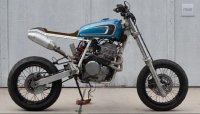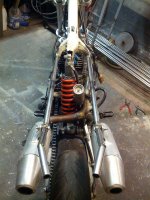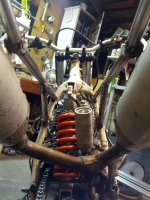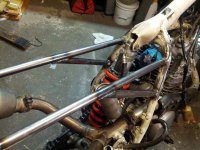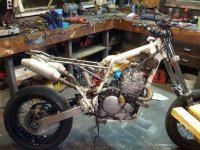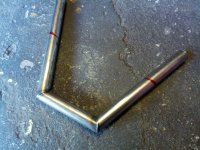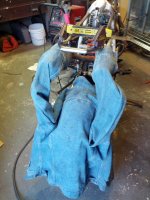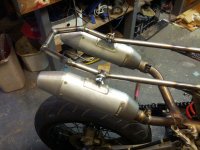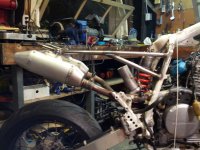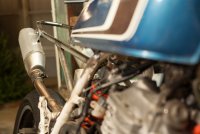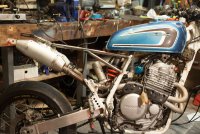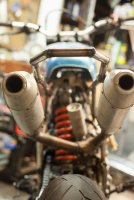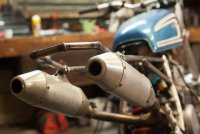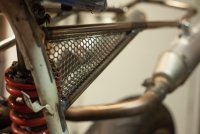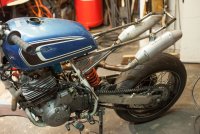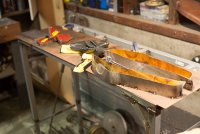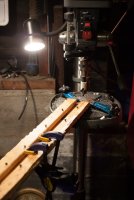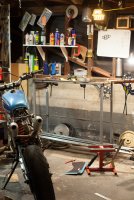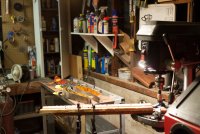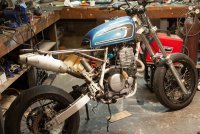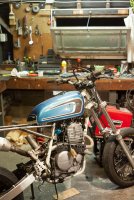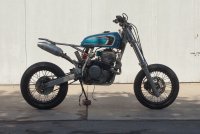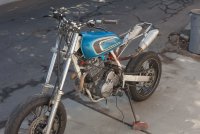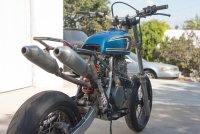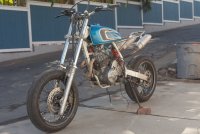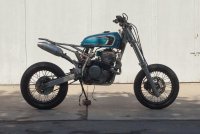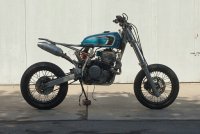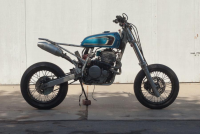compoundcycles said:
How would you guys go about lowering the front forks? Anyone know of a thread where someone has done this? Thanks.
I've lowered several sets of conventional "right-side-up" damper-rod forks with zero issues, including the same Showas on your and my XR's. As long as you're comfortable with basic general fork disassembly/reassembly, changing seals, bushings, springs, etc., then lowering the forks will be a cinch.
First, study the pictures on
this page thoroughly, or even better, print it out for reference. The text applies to fitting Race-Tech valve emulators (which you may or may not care about), but the diagrams are very clear and uncomplicated.
The XR Showas have a few more additional internal components than those shown in the drawings, but the same basic principles apply with regards to lowering the forks.
Look at the cross-sectional drawing and notice the position of the main spring in the upper portion of the fork tube, and the top-out spring in the lower section of the fork tube. Also look at the spacer between the top of the main spring and the bottom of the top cap. Not all forks will have a spacer there. Some forks will have some sort of adjuster built-in to the top cap that presses down on this spacer, or directly on the spring itself (no spacer).
I'm not sure if the stock XR forks have a spacer or not; my bike came to me with aftermarket springs installed, and spacers above those springs. All else being equal, longer top spacers = more spring preload, and shorter top spacers = less spring preload. (I think this is why many aftermarket springs come with spacers or spacer material; it allows you to set your initial preload by changing the spacer length).
To lower the forks, you remove length from the top spacer and add an identical length to the top-out spring. Generally, you can use the same size material for both locations. My aftermarket springs came installed with 3" spacers above them. This was ideal, as I wanted to lower the front approx. 3"! I simply moved the top spacer from the above the main spring to above the top-out spring. Both your ride height and your total available fork travel will be reduced by a corresponding length.
So that's it: just remove length from the top spacer and add it to the length of the top-out spring. If you have no top spacer (ie., the main spring rides directly on the top cap and/or top adjuster), you will have to cut your main spring down. Whatever amount you cut out of the main spring, add it to the top-out spring. The spacer material you use can be just about anything that will fit, as long as it is a slip-fit, strong in compression, and doesn't fill the space so completely as to impede oil flow. I've used thin-wall alloy tubing, PVC pipe, and machined aluminium spacers.
Some forks don't have top-out springs. In this case, add length to where the top-out spring would be if there was one. If you want to get fancy, you can add a top-out spring with careful measuring. For instance, when I lowered my stock XS650 forks, I cut 2-1/4" off of my main springs, then added a top-out spring with a 1-14" compressed length with a 1"spacer above it. My ride height was closer to 2-5/8" down from stock, but by using the compressed length of the top-out as a starting point, I guaranteed that I wouldn't have a "dead band" in my fork travel.
The exact interplay of tubes, rods, and pistons is almost impossible to explain and difficult to visualize, but once you have all the parts in your hands and finally "get it", you'll see that it's actually fairly simple.
Again, all of this assumes you're comfortable with basic damper-rod fork internal geometry, and basic assembly/disassembly. Internaly-lowering a rear shock is functionally simpler, but mechanically more difficult; let me know if/when you get to that stage...


